By Claire Blatchford, Art by Deborah Koff-Chapin
Shortly after the election I felt the need to reconnect with someone I admire, someone whose way of being in the world has always been an inspiration to me. I’ve actually never met this man in person—only through his writings—yet regard him as a close friend.
Jacques Lusseyran may also be familiar to some of you. He is best known for his book And There Was Light. He was born in Paris in 1924 and became totally blind from an accident when eight years old. Yet he discovered early on as a child that, although he couldn’t see in the usual way with his physical eyes, he could still see. And this “seeing” could grow, expand, and move in different directions. Here is how he describes the start of this discovery in his memoir:
I began to look more closely, not at things, but at a world closer to myself, looking from an inner place to one further within, instead of clinging to the movement of sight toward the world outside.
Immediately the substance of the universe drew together, redefined and peopled itself anew. I was aware of a radiance emanating from a place I knew nothing about, a place that might as well have been outside me as within. But radiance was there, or, to put it more precisely, light. It was a fact, for light was there.
I felt indescribable relief, and happiness so great it almost made me laugh. Confidence and gratitude came as if a prayer had been answered. I found light and joy at the same moment, and I can say without hesitation that from that time on light and joy have never been separated in my experience. I have had them or lost them together.
I saw light and went on seeing it though I was blind.
This may sound rather poetical to you-- Jacques’ writing is full of poetry—but for me, when I was 28 and first read of his different way of “seeing”—his words were more than merely lyrical, they rang true. I, myself, am not blind but am profoundly deaf. Like Jacques I lost my hearing suddenly at a young age and began my journey into the discovery that there are many ways of hearing even if one’s physical ears are damaged. The larger discovery, though, was that I, too, found confidence and gratitude in the “radiance” Jacques describes. I was unable to name this radiance, this light, as he did till much later in my life. We can know and yet not know something-- and when I first read his book -- my immediate response was, “Yes, I am pretty sure I know what he’s talking about!” This is why I go back to his words, and the way he lived out his understanding of and connection with light, that light which can be found within each and all of us, and especially when the darkness feels pronounced. As it does now in these confusing times.
In his book Jacques describes being able to “see” objects by way of the inner light. Because of it he was able to find his way not only around his home and the neighborhood he lived in, but when walking in the mountains as well. The light stimulated other forms of seeing within him. For example, in his home or neighborhood, the felt sense of familiar objects around him, their placement, the spaces between them and their light-- for all that is incarnated has light-- enabled him to “see” and thus to move with confidence. When in the mountains an even deeper seeing was awakened in such a way Jacques could instinctively see the rise and fall of the land. He struggled to explain this seeing to his best friend who had normal eyesight:
The reality—the oneness of the world—left me in the lurch, incapable of explaining it, because it seemed obvious. I could only repeat: “There is only one world. Things outside only exist if you go to meet them with everything you carry in yourself. As to the things inside, you will never see them well unless you allow those outside to enter in."
Especially helpful to me was Jacques’ discovery that, if he was angry or fearful, in short wasn’t attuned to the light, he had great difficulty, stumbled, banged into things, was unable to find his way. He showed me how I can become altogether deaf when I’m out of sorts, lacking in gratitude, oblivious to the radiance in the world and myself.
When Jacques was fifteen, Paris was invaded and the German occupation began. A year later, with a few close friends, he formed and headed an underground resistance movement of six hundred youths. Because of what his comrades called his “sense of human beings” Jacques was chosen to interview all recruits. He could “see” into men, could see the light or the dark of the thoughts they held in their hearts. Being able to use this seeing for the good of his country guided him day by day.
I was madly happy to be doing this work, to have men in front of me, to make them speak out about themselves, to induce them to say things they were not in the habit of saying because these things were set too deep in them—suddenly to hear in their voices the note above all others, the note of confidence. This filled me with assurance that was very like love. Around me it drew a magic circle of protection, a sign that nothing bad could happen to me. The light that shone in my head was so bright, and so strong that it was like joy distilled. Somehow I became invulnerable.
From there Jacques’ story took him into Buchenwald after the one man he was uncertain about was recruited, and later betrayed Jacques and his comrades to the Nazis. That he came out alive-- though mere skin and bones-- and went on to become husband, father, university professor and writer was a testament to the Light within.
*
I hope at this point that I don’t sound as though I’m just writing a review of a book which is both luminous and incredibly suspenseful. What became clear to me as I tracked down my heavily underlined copy is how very important the admiration connection is right now. It’s said we become what we admire. In this time of ugly words, thoughts and deeds I feel the need like a hunger: to draw close to the enlightened words, thoughts and deeds of those I admire —here and on the other side too.
Jacques’ discoveries as a blind man not only helped me make sense of my discoveries as a deaf woman, helping me to connect with the essential wholeness that is within everyone of us even if physically different or chronically ill, they showed how we can be blind and deaf in more ways than the physical. The conditions we are in can blind and deafen us to the light within and without. Jacques’ message is more relevant now than ever: And There IS Light!
How are you finding Hope these days and kindling the Light within? Please email responses to drenag@lorian.org.



 “We still have power, individually and collectively, to shape and respond to our present and future. I look outside my window now and wonder if I will still be in this wonderful place
“We still have power, individually and collectively, to shape and respond to our present and future. I look outside my window now and wonder if I will still be in this wonderful place 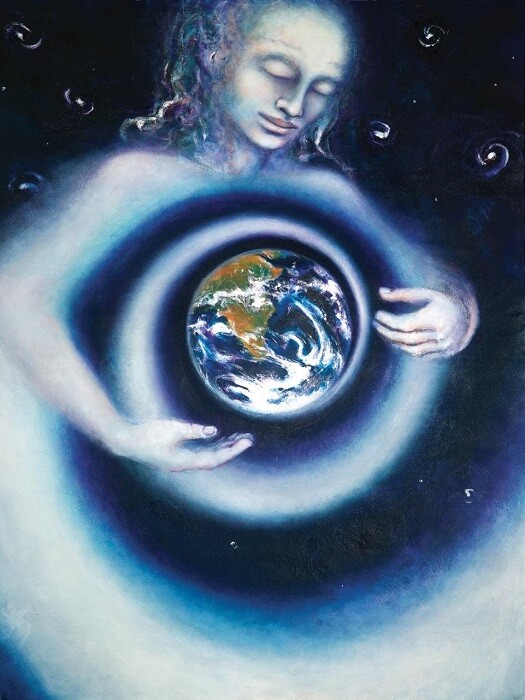
 Having been blessed with some acute senses, I move through a world brimming with sights, sounds and smells. Given that I share that world with a partner who has no sense of smell and is partly deaf, I am especially aware of how much I depend on these senses. Last week my dependence on my nose was brought uncomfortably to my attention.
Having been blessed with some acute senses, I move through a world brimming with sights, sounds and smells. Given that I share that world with a partner who has no sense of smell and is partly deaf, I am especially aware of how much I depend on these senses. Last week my dependence on my nose was brought uncomfortably to my attention. When I got to the checkout lines, there were three to choose from, one of which would take me right behind this woman. Noticing her felt uncomfortable. Do I hide from her and let this discomfort continue? It seemed as if she was studiously avoiding seeing me. I decided that I would push through my embarrassment and reach out to my neighbor, perhaps alleviating her probable discomfort at the same time. I pulled into line behind her and touching her gently on the shoulder, getting her attention, I said, "You are right. People might not appreciate my nose in the bags. Thank you for pointing it out to me."
When I got to the checkout lines, there were three to choose from, one of which would take me right behind this woman. Noticing her felt uncomfortable. Do I hide from her and let this discomfort continue? It seemed as if she was studiously avoiding seeing me. I decided that I would push through my embarrassment and reach out to my neighbor, perhaps alleviating her probable discomfort at the same time. I pulled into line behind her and touching her gently on the shoulder, getting her attention, I said, "You are right. People might not appreciate my nose in the bags. Thank you for pointing it out to me." Would you like an opportunity to deepen your capacity to meet daily moments of choice with an attitude of wholeness, love and blessing? Would you welcome the chance to develop your practice of subtle activism with others of like heart and mind? From December 4-10, join us for
Would you like an opportunity to deepen your capacity to meet daily moments of choice with an attitude of wholeness, love and blessing? Would you welcome the chance to develop your practice of subtle activism with others of like heart and mind? From December 4-10, join us for 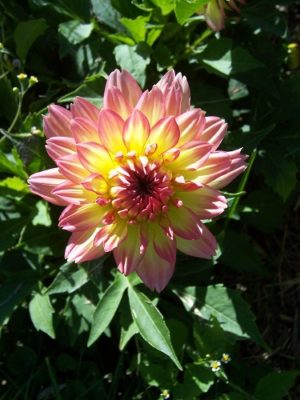 Word of the first frost reminds me of the dahlias. It's another sort of news, I think, as I start the coffee. Dahlias have been the major headline in the garden for over a month. Yellow blossoms the size of dinner plates, orange fireworks, purple pom-poms, and my favorites, the smallish sun-set beauties with pink-gold-scarlet petals. And now what? They always go black overnight beneath the touch of the first frost—all of them, all at once. It happens every year and is a powerful and dramatic moment. I often can’t remember, as I look at the charred remains the next morning, which was which. Was this shriveled plant tall or medium-tall? Was its flowering occasional or prolific? What color were the flowers? All individuality wiped out in one shot.
Word of the first frost reminds me of the dahlias. It's another sort of news, I think, as I start the coffee. Dahlias have been the major headline in the garden for over a month. Yellow blossoms the size of dinner plates, orange fireworks, purple pom-poms, and my favorites, the smallish sun-set beauties with pink-gold-scarlet petals. And now what? They always go black overnight beneath the touch of the first frost—all of them, all at once. It happens every year and is a powerful and dramatic moment. I often can’t remember, as I look at the charred remains the next morning, which was which. Was this shriveled plant tall or medium-tall? Was its flowering occasional or prolific? What color were the flowers? All individuality wiped out in one shot.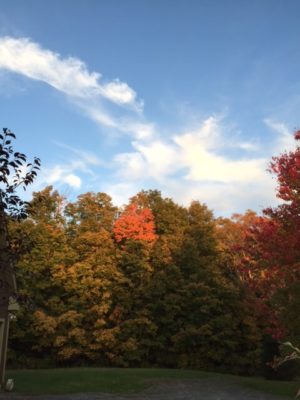 On my way down the drive, with the dog excitedly checking out every scent on every leaf and blade of grass, an early shaft of sun light pulls my eyes upwards to a circle of orange within one of the maples. Amazing! An orange circle within the lingering summer green of one tree shouting, “Make a joyful noise unto the Lord, all ye lands…”
On my way down the drive, with the dog excitedly checking out every scent on every leaf and blade of grass, an early shaft of sun light pulls my eyes upwards to a circle of orange within one of the maples. Amazing! An orange circle within the lingering summer green of one tree shouting, “Make a joyful noise unto the Lord, all ye lands…” 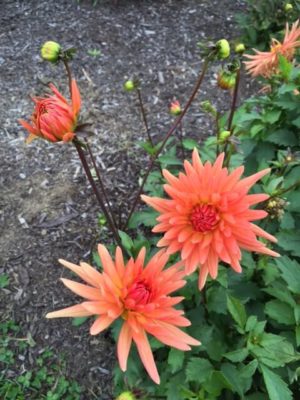 Ten minutes later I’m back in the kitchen with a pocketful of nasturtiums seeds (the bumpy bead-like shapes), one last enormous bouquet of dahlias (pick them all when you can!) and the folded newspaper under my arm. The coffee’s ready. And I’m actually already all filled up. Filled up with the local, all-around-me, find-what-you can news. The news that makes me glad and excited to be here.
Ten minutes later I’m back in the kitchen with a pocketful of nasturtiums seeds (the bumpy bead-like shapes), one last enormous bouquet of dahlias (pick them all when you can!) and the folded newspaper under my arm. The coffee’s ready. And I’m actually already all filled up. Filled up with the local, all-around-me, find-what-you can news. The news that makes me glad and excited to be here. I was born into a great experiment in individual freedom—the United States—founded on the values of life, liberty, and the pursuit of happiness. Experiments exist to test what’s possible and this one asked, “What can bring a vast multicultural and multiracial population into a life of shared governance and mutual respect?” One does not experiment where everything is already known, where the solution has been found. My country’s democracy did not begin as a perfect realization of the ideal. The government stole land from native tribes. It reserved individual rights for some while excluding others. Over decades and after valiant struggles, the democracy opened wider to include women and former slaves. But the push continues for a just society, with full participation and equal access for all.
I was born into a great experiment in individual freedom—the United States—founded on the values of life, liberty, and the pursuit of happiness. Experiments exist to test what’s possible and this one asked, “What can bring a vast multicultural and multiracial population into a life of shared governance and mutual respect?” One does not experiment where everything is already known, where the solution has been found. My country’s democracy did not begin as a perfect realization of the ideal. The government stole land from native tribes. It reserved individual rights for some while excluding others. Over decades and after valiant struggles, the democracy opened wider to include women and former slaves. But the push continues for a just society, with full participation and equal access for all.  In a recent Views from the Borderland, David quoted one of his subtle colleagues saying that we incarnate humans “have a sense of organizations but not of organisms, thus it’s hard for us to understand and appreciate the sphere of interconnectedness and wholeness in which souls normally function.” We “project onto the subtle worlds … images of hierarchy, rank, status, and specialness.”
In a recent Views from the Borderland, David quoted one of his subtle colleagues saying that we incarnate humans “have a sense of organizations but not of organisms, thus it’s hard for us to understand and appreciate the sphere of interconnectedness and wholeness in which souls normally function.” We “project onto the subtle worlds … images of hierarchy, rank, status, and specialness.”  Manifestation is often seen as a way of getting something. But from the perspective of Incarnational Spirituality, it’s an act of identity, of becoming something. It’s an act of ‘incarnating’ a new pattern of ourselves into reality, and growing into a new expression of ourselves. Join us on Sunday, October 16, for a Free Teleclass on using the principles of Incarnational Manifestation to shape a life you love.
Manifestation is often seen as a way of getting something. But from the perspective of Incarnational Spirituality, it’s an act of identity, of becoming something. It’s an act of ‘incarnating’ a new pattern of ourselves into reality, and growing into a new expression of ourselves. Join us on Sunday, October 16, for a Free Teleclass on using the principles of Incarnational Manifestation to shape a life you love.  About a month ago my husband Ed and I were driving down the main street of Greenfield (a nearby town) around 4:30 pm. I was at the wheel, going about 20 MPH, there were no cars close behind us, we were on our way back from a 9 hour road trip to Boston, and were eager to get home.
About a month ago my husband Ed and I were driving down the main street of Greenfield (a nearby town) around 4:30 pm. I was at the wheel, going about 20 MPH, there were no cars close behind us, we were on our way back from a 9 hour road trip to Boston, and were eager to get home. Yet from the look on Cliff’s face I knew he was asking for more than that. I looked again at his drawing, more intently this time, saw there was an unclear spot and saw too how it might be rectified. When I pointed out my suggestion, his face lit up. This was a five minute exchange yet, within those few minutes, I knew my response to be an acknowledgement of relationship, not just between two people but between two people and a world of possibilities—as they were being revealed in an art class. This was response at it’s most hopeful and joyful.
Yet from the look on Cliff’s face I knew he was asking for more than that. I looked again at his drawing, more intently this time, saw there was an unclear spot and saw too how it might be rectified. When I pointed out my suggestion, his face lit up. This was a five minute exchange yet, within those few minutes, I knew my response to be an acknowledgement of relationship, not just between two people but between two people and a world of possibilities—as they were being revealed in an art class. This was response at it’s most hopeful and joyful. 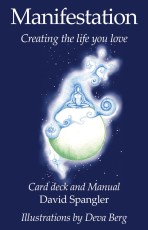
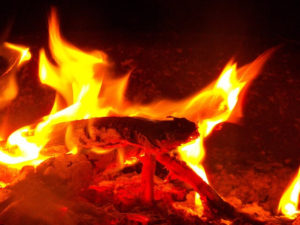 Imagine that you are camping in the woods. You are in a clearing at the center of which is a fire pit. In the forest around you, you see plenty of dry kindling and pieces of wood that you can use to build a fire and keep it going.
Imagine that you are camping in the woods. You are in a clearing at the center of which is a fire pit. In the forest around you, you see plenty of dry kindling and pieces of wood that you can use to build a fire and keep it going.
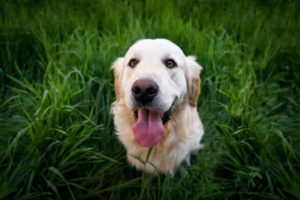 One evening last month, it was clear my mother's golden retriever, Winston, was dying. I could see in my Mom's face the same devastation I feel whenever one of my own dogs has died. She was going to have him put to sleep the next morning. Saying goodbye to a beloved animal companion is utterly heartbreaking, every single time.
One evening last month, it was clear my mother's golden retriever, Winston, was dying. I could see in my Mom's face the same devastation I feel whenever one of my own dogs has died. She was going to have him put to sleep the next morning. Saying goodbye to a beloved animal companion is utterly heartbreaking, every single time. 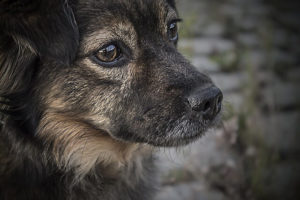 If our hearts have Achille's heels, mine is animal suffering. The dog meat festival hit me where I am most vulnerable, triggering all of my worst fears and greatest sorrows about humanity’s relationship with animals. Dogs were the very first animal be domesticated, throwing their lot in with ours over 15,000 years ago. Perhaps because they have allied themselves completely with humanity, loving and serving us since we sat in skins around campfires, the deliberate abuse of dogs seems the worst form of betrayal.
If our hearts have Achille's heels, mine is animal suffering. The dog meat festival hit me where I am most vulnerable, triggering all of my worst fears and greatest sorrows about humanity’s relationship with animals. Dogs were the very first animal be domesticated, throwing their lot in with ours over 15,000 years ago. Perhaps because they have allied themselves completely with humanity, loving and serving us since we sat in skins around campfires, the deliberate abuse of dogs seems the worst form of betrayal. 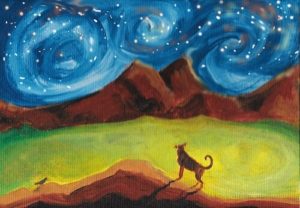
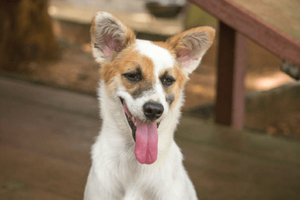
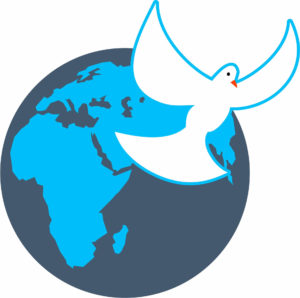 It is very apparent that we are passing through a difficult time together on planet Earth. There is a growing recognition that our conventional social, economic, and political systems are no longer working well enough (if they ever did) to bring about a just, sustainable, and spiritually fulfilling world. However, while many responsible voices have identified the need for a fundamental evolutionary shift, other forces are exploiting this climate of discontent for their own ends.
It is very apparent that we are passing through a difficult time together on planet Earth. There is a growing recognition that our conventional social, economic, and political systems are no longer working well enough (if they ever did) to bring about a just, sustainable, and spiritually fulfilling world. However, while many responsible voices have identified the need for a fundamental evolutionary shift, other forces are exploiting this climate of discontent for their own ends.